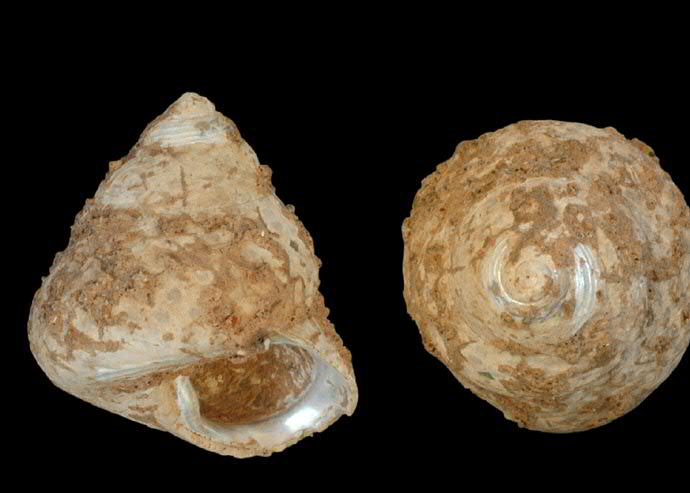New dating of the dispersal of modern humans in Europe

New radiocarbon dating has shown that modern humans lived in the Levant from at least 45,900 years ago and colonized Europe from there. They were already using advanced tools before this colonization. It was previously assumed that these were a ‘European’ invention.
An international team led by researchers from the Max Planck Institute for Evolutionary Anthropology in Leipzig and comprising researchers from the Universities of Leiden, Groningen, Mainz, York and Cambridge discovered this by dating shells found at the Ksâr ‘Akil site in Lebanon. The results were published this week in the journal Proceedings of the National Academy of Sciences.
Follow the migration
Ksâr ‘Akil is one of the few archaeological sites where human fossils can be directly linked to advanced tools and other archaeological material from the Old Stone Age (the Palaeolithic). Similar tools emerge from soon afterwards at various sites in Europe, which make it possible to follow the migration of these people.
Earlier known fossils
The researchers dated the shells of the sea snail Phorcus turbinatus, which the inhabitants of Ksâr ‘Akil ate, and discovered that the first modern humans had already arrived there at least 45,900 years ago. This is earlier than the oldest known fossils in Europe, which date from between 45,000 and 43,000 years ago. This indicates that the Levant served as a corridor for the dispersal of our ancestors when they left Africa and eventually colonized Eurasia.
Characterization modern humans
The dispersal of these modern humans, who were already very similar to us in behaviour and appearance, is associated with changes in the techniques and materials they used to make tools. These modern humans are also characterized by the use of decorations such as beads made from shell, bone and ivory and the large-scale use of ochre as a red dye. Archaeologists use these changes to define the transition from the Middle to the Upper Palaeolithic.
New Method of dating
In their study the researchers used a new method to evaluate the integrity of the shells that they dated. They dated sixteen shells that appeared to be intact according to macroscopic and chemical criteria. By using special methods (studying sediment changes, isotopes of oxygen and modelling the radiocarbon results), they were able to develop a new chronology for the start of the Upper Palaeolithic in Ksâr ‘Akil .
Earlier than was previously thought
The results show that modern humans from the Upper Palaeolithic were present in the Levant more than 45,900 years ago. This is earlier than was previously thought and makes the Lebanese fossils older than comparable fossils in Europe. The new dating suggests that our direct ancestors colonized Europe from the Levant.
Reference: Bosch, M. et al.: New chronology for Ksâr ‘Akil (Lebanon) supports Levantine route of modern human dispersal into Europe . Proc. Natl Acad. Sci. USA http://dx.doi.org/10.1073/pnas.1501529112 (2015). Doi: 10.1073/pnas.1501529112.
More Information
Johannes van der Plicht is head of the radiocarbon laboratory at the University of Groningen. He is also Professor of Isotope Archaeology at Leiden University. Alongside his work in the radiocarbon dating, which is used to establish the chronology of archaeological sites, he also works on the stable isotope analysis of nitrogen and carbon from fossilized bone. This helps us draw conclusions about the diet, migration, climate change and chronology of the Palaeolithic.
Telephone: 050-3634730
email: j.van.der.plicht@rug.nl
| Last modified: | 12 March 2020 9.46 p.m. |
More news
-
13 May 2024
‘The colourful cells of petals never get boring!’
Most people will enjoy colours in nature. However, the interest of evolutionary biologist Casper van der Kooi goes much further: he studies how flowers, birds, butterflies, and beetles get their colours. He also studies how these colours are used...
-
13 May 2024
Trapping molecules
In his laboratory, physicist Steven Hoekstra is building an experimental set-up made of two parts: one that produces barium fluoride molecules, and a second part that traps the molecules and brings them to an almost complete standstill so they can...
-
07 May 2024
Lecture with soon to be Honorary Doctor Gerrit Hiemstra on May 24
In celebration of his honorary doctorate, FSE has invited Hiemstra to give a lecture entitled ‘Science, let's talk about it’ on the morning of 24 May
